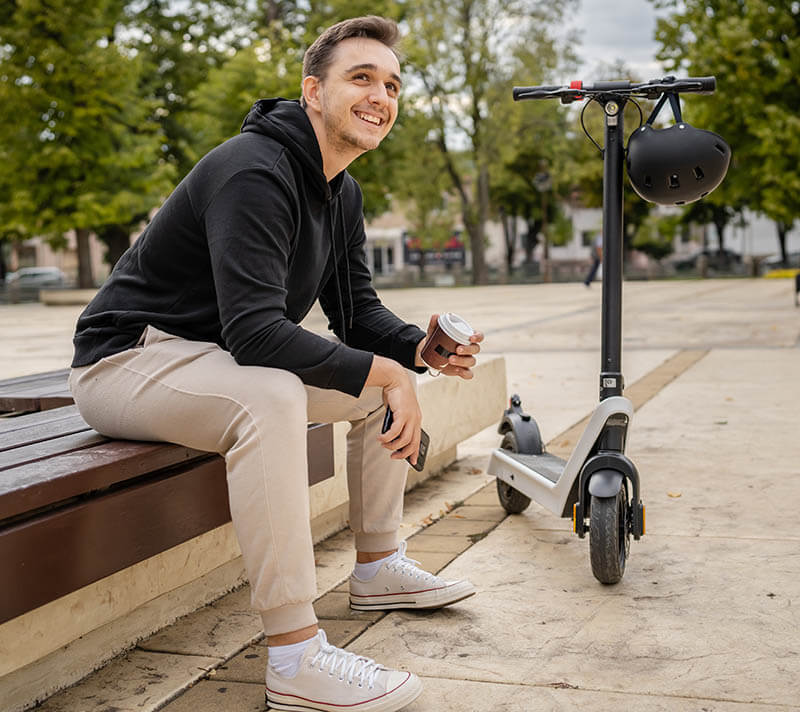Home » Services » LASIK
LASIK Vision Correction
Who is a Good LASIK Candidate?
Are you ready to wake up with clear vision again? Do you want to see Houston and everything it has to offer? If you answered yes then you’re in the right place!
You may be eligible for a procedure called LASIK that’s already changed millions of people’s lives. Keep reading to learn more about the procedure from Houston’s leading LASIK specialists, at Slade & Baker Vision.
What is LASIK?
LASIK corrects blurry vision by reshaping the cornea to fix refractive errors like nearsightedness, farsightedness, and astigmatism.
In a normal eye, light entering through the cornea gets focused onto the retina, creating clear vision. Refractive errors occur when an improperly shaped cornea causes light to focus incorrectly: too curved (nearsightedness) focuses light before the retina, too flat (farsightedness) focuses light behind it, and irregular (astigmatism) creates multiple focus points. LASIK corrects vision by reshaping the cornea to properly direct light onto the retina and offers a long-term solution for vision problems.
Who is a Good LASIK Candidate?
Like any surgical procedure, LASIK is not something that’s right for everyone. Between 10-15% of all potential LASIK candidates are not qualified for the procedure. A LASIK eye surgery consultation will provide your results. Take our free LASIK Self-Test to receive your preliminary LASIK candidacy results! Once completed one of our team members will be in touch to discuss the next steps.
How Much Does LASIK Cost in Houston?
Many patients often worry about the cost of LASIK eye surgery. At Slade & Baker Vision Center we offer an honest price with no gimmicks or fake promises. If the cost of LASIK is a barrier we offer special financing programs with Care Credit to enable the reality of getting LASIK eye surgery. Our LASIK counselors will work with you to help find a way to get LASIK surgery. We understand that price does play a role in your decision to undergo LASIK eye surgery. The least expensive or cheapest eye doctor is not always the best surgeon using the best LASIK technology. These are your eyes and this eye surgery is not reversible so be careful in your LASIK surgeon selection process.
The cost of LASIK is typically between $2,000 – $4,500 per eye. However, since everyone is different the cost of LASIK will vary depending on your situation. Factors such as your current vision, eye health, and more can go into determining the cost of your LASIK procedure. Contact us today to speak with Houston’s premier LASIK surgeons and learn more!
All LASIK Procedures Include the Following at Slade and Baker Vision:
A complimentary consultation. The best “First Step” to find out the ideal option for your eyes.
The latest state-of-the-art laser and diagnostic technology used to provide top quality vision correction surgery.
A customized approach that provides the best solution for all patients including those with thin corneas, dry eye, irregular corneas, high prescriptions or presbyopia.
24-months, no-interest financing provided (with approved credit through CareCredit).
What Makes Slade & Baker Vision Center the Best Choice for LASIK in Houston?
Dr. Stephen Slade is a world renowned LASIK surgeon who is very involved with clinical trials, research and numerous ophthalmology societies like ASCRS and AECOS. His contributions to the field are deeply memorable and he is a sough after speaker on the topic of LASIK and refractive surgery. He was part of a two man team to be the first ophthalmologists in the US to perform LASIK eye surgery. He has been ranked by Best Doctors as top eye doctor and he has certified over 8,000 eye surgeons to do LASIK eye surgery. He trains many ophthalmologists on LASIK and new versions of LASIK eye surgery. When you come to this practice you know you are getting one of the best.
What Can I Expect During the LASIK Procedure?
1
Before LASIK ever begins, your surgeon starts by giving numbing eyedrops. These slowly travel over the surface of your eye and make sure you don’t feel any pain during the procedure.
2
Next, a speculum will be used to hold your eyes open.
During LASIK, two lasers are used: a femtosecond laser and an excimer laser.
3
The surgeon creates a thin flap in the top of the cornea with the femtosecond laser.
After creating the flap, it’s then pulled back.
4
The excimer laser is then used to remove a tiny amount of corneal tissue from the middle layer of the cornea and then the flap gets placed back down. There are no stitches or bandages used during LASIK since the flap comes back together on its own.
How Long Does LASIK Eye Surgery Take?
LASIK only takes about 15 minutes per eye to perform, but you may need to stay longer while your surgeon watches to make sure you are recovering appropriately. Once cleared, you can go home.
What will my vision be like after LASIK surgery?
Most patients get up from the surgical chair and can read the clock on the wall. We ask that you go home and sleep as much as possible in the first day after surgery. Vision may be slightly blurry for the first few days but will dramatically improve over the first 2 weeks. Feel free to read some of the stories from our happy LASIK patients.
What is the Recovery Like After the Surgery?
The first thing you need to know after having LASIK is you cannot drive yourself home. Make sure you have a friend or a family member that can get you home safely. Once home, you’ll probably be exhausted, so the best thing you can do is rest. If your surgeon gives you eye shields, wear these while you’re sleeping to keep from rubbing your eyes or bumping them in your sleep.
What Are The Benefits of LASIK?
LASIK eye surgery offers numerous benefits for individuals seeking clearer vision without the need for glasses or contact lenses. One of the most appealing advantages is the quick recovery time; many patients experience significantly improved vision within 24 hours after the procedure. LASIK is a safe, highly effective procedure that can correct common vision issues such as nearsightedness, farsightedness, and astigmatism by reshaping the cornea. This results in better, more stable vision and reduces or eliminates dependence on corrective lenses. Additionally, LASIK can be cost-effective in the long run, as patients save on the recurring expenses of glasses, contact lenses, and associated care products. The freedom to engage in activities like swimming, sports, or traveling without worrying about eyewear makes LASIK an attractive option for many.
The First Week After Surgery
The first week after you have LASIK, you should be able to return to many of your normal activities. Make sure you attend your first follow-up appointment, which is usually the day after your procedure. Most people can go back to work the next day.
If your eye doctor clears it, you should also be able to start driving again. Do not wear any eye makeup or lotions, or use any face soap during this time.
Avoid any bending over and contact sports that may cause you to get hit in the head or face.
The First Month After Surgery
Avoid any and all bodies of water in the first month after you have LASIK. This includes lakes, pools, hot tubs, the ocean, and anywhere that you may go swimming.
Your eyes are very sensitive and more prone to infections during this time. Attend any other follow-up appointments as scheduled by your eye doctor to make sure your eyes are healing and there are no complications.
Want to learn more about LASIK? Schedule your LASIK consultation at Slade & Baker Vision in Houston today!
Frequently Asked Questions About LASIK
Traveling for LASIK from Out of Town?
We see patients from around the world for LASIK and all procedures. Please click here for more information if you would be traveling to Slade & Baker Vision from elsewhere.
Did You Know?
Doctors have been performing LASIK for over 2 decades and to date, approximately over 40 million LASIK procedures have been performed since 1991! (Fun Fact this was the same year Dr. Slade performed the first LASIK surgery in the US!).
For a complete list of questions, please refer to our Understanding LASIK Eye Surgery page for more questions and information.
Houston LASIK Surgery Center
If you have questions about LASIK or contact lens wear, please do not ever hesitate to call our office at 713-626-5544 and speak to our experts.
- Ikeda, T., Shimizu, K., Igarashi, A., Kasahara, S., & Kamiya, K. (2017). Twelve-Year Follow-Up of Laser In Situ Keratomileusis for Moderate to High Myopia. BioMed Research International, 2017.










